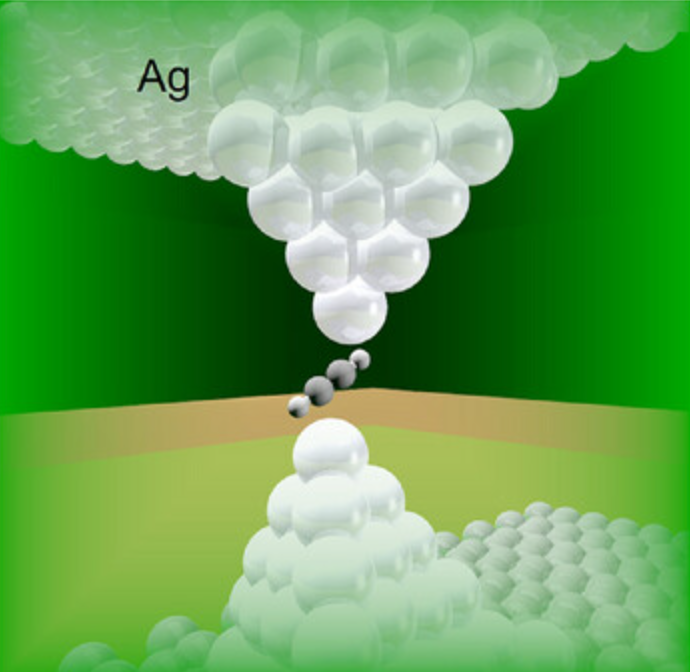Commonly used drug could revolutionize treatment of rare muscle disorder
New trial finds lamotrigine as effective as mexiletine for non-dystrophic myotonia, providing a safer and more accessible treatment option.

The goal was to determine the effectiveness of each drug in reducing stiffness, the primary symptom of non-dystrophic myotonia. (CREDIT: CC BY-SA 3.0)
This latest research on non-dystrophic myotonia offers promising results for those affected by the condition. Published in Lancet Neurology, the study details a "head-to-head" trial comparing two drugs—mexiletine and lamotrigine—to find effective treatments for this rare muscle disorder.
The results highlight potential improvements in managing the debilitating symptoms of this condition and provide an expanded range of treatment options.
The trial took place at the UCL Queen Square Multidisciplinary Centre for Neuromuscular Diseases and the National Hospital for Neurology and Neurosurgery. Sixty adults with confirmed non-dystrophic myotonia participated.
To compare the drugs, researchers randomly assigned participants to receive either mexiletine for eight weeks, followed by lamotrigine for another eight weeks, or vice versa, with a one-week washout period between the treatments. Importantly, the trial was double-blind, meaning neither participants nor researchers knew which drug was being administered at any time.
The goal was to determine the effectiveness of each drug in reducing stiffness, the primary symptom of non-dystrophic myotonia. By the end of the trial, both drugs proved similarly effective in managing stiffness. Lamotrigine emerged as a promising alternative to mexiletine, potentially expanding the range of treatments available for this muscle channelopathy.
Dr. Vino Vivekanandam, chief investigator from the UCL Queen Square Institute of Neurology, emphasized the significance of this head-to-head comparison. “Approximately one in 17 people in the UK have a rare disease and the majority have no treatment,” Vivekanandam noted.
He added that many of these are neurological diseases, where rarity makes clinical trials challenging. The direct comparison of mexiletine and lamotrigine was an important step in identifying the most suitable treatment options. “The trial results are very exciting and important for patients with this muscle channelopathy.”
Related Stories
Non-dystrophic myotonias are caused by abnormalities in ion channels within the muscles, leading to symptoms such as stiffness, pain, fatigue, and weakness. These symptoms typically begin in childhood and have a profound impact on quality of life, affecting everyday activities and employability. Unfortunately, there is no known cure for these disorders.
In 2012, a multi-centered international trial led by the same UCL research team successfully repurposed mexiletine—a sodium channel blocker—to treat non-dystrophic myotonia, demonstrating that it could significantly improve quality of life for those affected. Consequently, mexiletine became the first-line treatment worldwide for these conditions.
Despite its effectiveness, not all patients respond well to mexiletine. About a third experience significant side effects, most commonly gastrointestinal issues like acid reflux. Additionally, mexiletine is not suitable for use during pregnancy, a time when myotonia often worsens.
The latest study offers lamotrigine as a viable alternative. It showed that lamotrigine was not only effective in reducing muscle stiffness but also well tolerated by patients, without any serious side effects. It also has the added advantage of being safe to use during pregnancy, something not possible with mexiletine.
Furthermore, lamotrigine is more affordable, making it accessible in a wider range of settings. These benefits make it a valuable addition to the treatment landscape.
Professor Michael Hanna, senior author of the study, highlighted the significance of drug repurposing, particularly for rare diseases like non-dystrophic myotonias. He stated, "Drug repurposing is an important strategy in developing treatments for rare diseases. This is the first head-to-head trial in this rare muscle disease, and the results will directly inform patient care and provide more ‘real-world’ options for patients."
This research could have a substantial impact on clinical practice globally. In many developing countries, mexiletine may not be readily available or might be prohibitively expensive, even in developed countries. Demonstrating that lamotrigine offers similar benefits makes it a valuable treatment option for those unable to access mexiletine. The findings are expected to influence clinical practice around the world, providing new options for patients.
As Dr. Vivekanandam explained, the research team has already begun applying the findings in clinical settings. “Based on this trial data, we have already developed a personalized treatment algorithm for clinical practice which is already in use in our clinical service, which takes into consideration several aspects of the trial and the mechanism of actions of lamotrigine and mexiletine as well as local economic considerations.”
This algorithm is designed to optimize treatment for individual patients based on factors such as drug mechanism, side effect profile, and economic circumstances, thus personalizing care for each patient’s needs.
The research was supported by funding from the Neuromuscular Study Group, the Jon Moulton Charity Trust, and a fast-track grant from the National Institute for Health and Care Research (NIHR) biomedical research center at UCLH. The research team also expressed their gratitude to the patients and their families who participated, noting that their involvement was crucial in making the trial possible.
This study’s results are a significant step forward for the treatment of non-dystrophic myotonias, showing that lamotrigine can provide an effective alternative to mexiletine.
Not only does this offer hope for patients who cannot tolerate mexiletine due to side effects, but it also ensures that those in regions where mexiletine is inaccessible have another treatment option. Expanding the range of available therapies helps to reduce the burden of this chronic condition, improving the quality of life for people living with non-dystrophic myotonias.
The broader implications of this research suggest that repurposing existing drugs may be an important strategy for addressing rare diseases that lack dedicated treatments. With conditions like non-dystrophic myotonias affecting relatively few people, large-scale drug development may be impractical.
However, by exploring new uses for existing medications, researchers can help fill the treatment gaps for many patients who need options.
Note: Materials provided above by The Brighter Side of News. Content may be edited for style and length.
Like these kind of feel good stories? Get The Brighter Side of News' newsletter.



